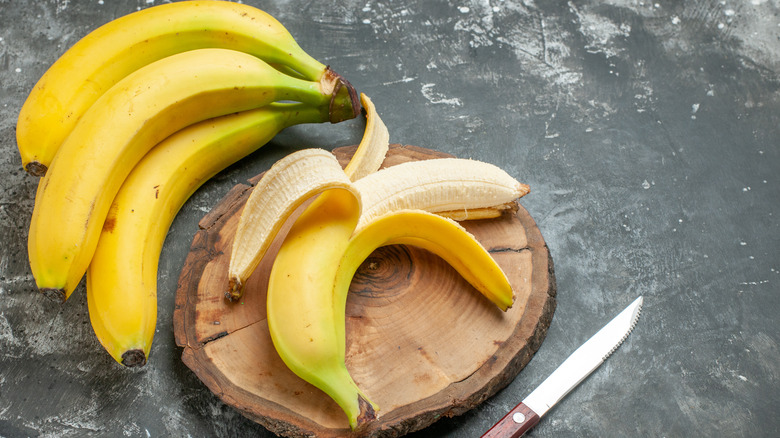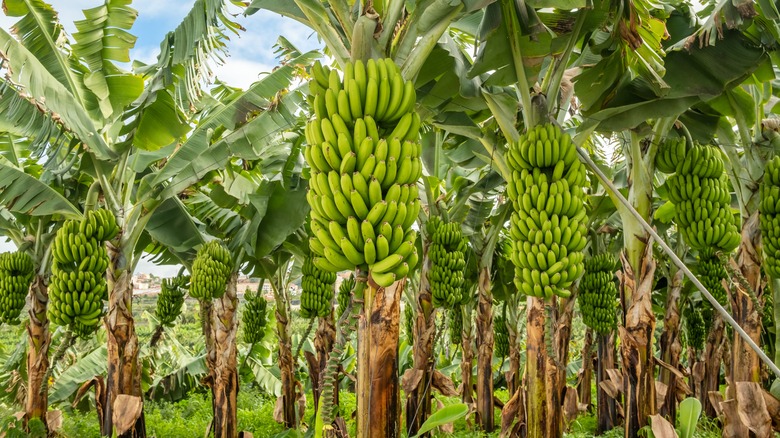Why Bananas Were Originally Eaten As Vegetables
Bananas are some of the most ubiquitous fruits we have, synonymous with sweet snacking and iconic desserts like banana cream pie, but they didn't start their journey so sugary. In fact, for most of their history, bananas were considered a more savory vegetable or starch — or not even used for food at all. That's because the banana as we know it in the U.S. is a relatively new creation. What we think of as sweet bananas are just one common type, Cavendish, that are primarily exported to America, Europe, and China. Meanwhile, the less naturally sweet bananas, which we usually call plantains, are eaten as a staple crop in much of the rest of the world. And those Cavendish bananas only recently evolved, with the yellow sweet banana being discovered as a mutated strain on a Jamaican plantation in the 1830s. But the banana has a much, much longer history, going back as far as 10,000 years.
The first bananas are extremely hard to trace. The wild forebears of the banana grow in Southeast Asia and Australasia, and New Guinea has been identified as the likely first site of domestication sometime between 5,000 and 8,000 B.C. However, the banana spread around the area rapidly, often being reintroduced over and over, making it hard to pin down. By the time Alexander the Great first saw the plant in India in 327 B.C.E., it had spread throughout Asia and East Africa and was being consumed as a staple starch in many regions.
Bananas were cultivated for a variety of purposes beyond eating before becoming a popular fruit
Even though bananas were widely cultivated almost as far back as recorded history goes, they were not considered a particularly desirable food for most of history. The wild banana is very seedy and considered unpleasant to eat, and it would have taken generations of breeding to alter this. Instead, it was the fibers of the banana peel (which were useful for textiles) and banana leaves (which can be used as wrapping) that were desirable. The more edible parts of the banana were the buds, flowers, and inner sheath, which are much more like vegetables than the sweet fruit we enjoy today.
Even as bananas grew to be consumed more for their inner flesh, they weren't a sought after trade crop. Plantations would grow them as a shade tree for more valuable products, like coffee and cacao. It was also considered a good, cheap way to feed large slave populations, because bananas required little work on their own and the starchy flesh is a good source of energy. Even today, cooking bananas are still a staple crop in many regions of Africa, and fried plantains have remained a popular savory starch in Latin American cuisines. It took thousands of years of breeding before that first sweet banana made its appearance in Jamaica, and the way many bananas are still eaten around the world shows just how subjective our food classifications can be.

